When your health fails, everything else falls away.
In those moments, meetings become meaningless, deadlines lose their grip, and digital distractions fade into irrelevance. What remains is the stark realization that health isn’t just another priority—it’s the foundation upon which everything else stands.
Yet for many, health remains a mystery, navigated through fragmented systems and reactive measures. Despite the abundance of information, the path to true wellness often feels obscured.
The Most Important System We Ignore
We are taught to chase many things: success, productivity, recognition, even peace. But rarely are we taught to chase clarity in the one system that makes all the others possible: our health.
We spend our lives building systems around us — career, income, relationships — often with the assumption that our bodies will always keep up. That our energy will be there when we need it. That our focus and sleep and digestion and resilience will just… work.
Until they don’t.
And when that day comes, a diagnosis, a breakdown, a wave of unexplained fatigue, suddenly the spreadsheet doesn’t matter. The deadlines fade. The urgency of everything else shrinks in the shadow of the body’s quiet scream:
“You didn’t listen when I whispered. So now I’m shouting.”
This isn’t melodrama. It’s biology.
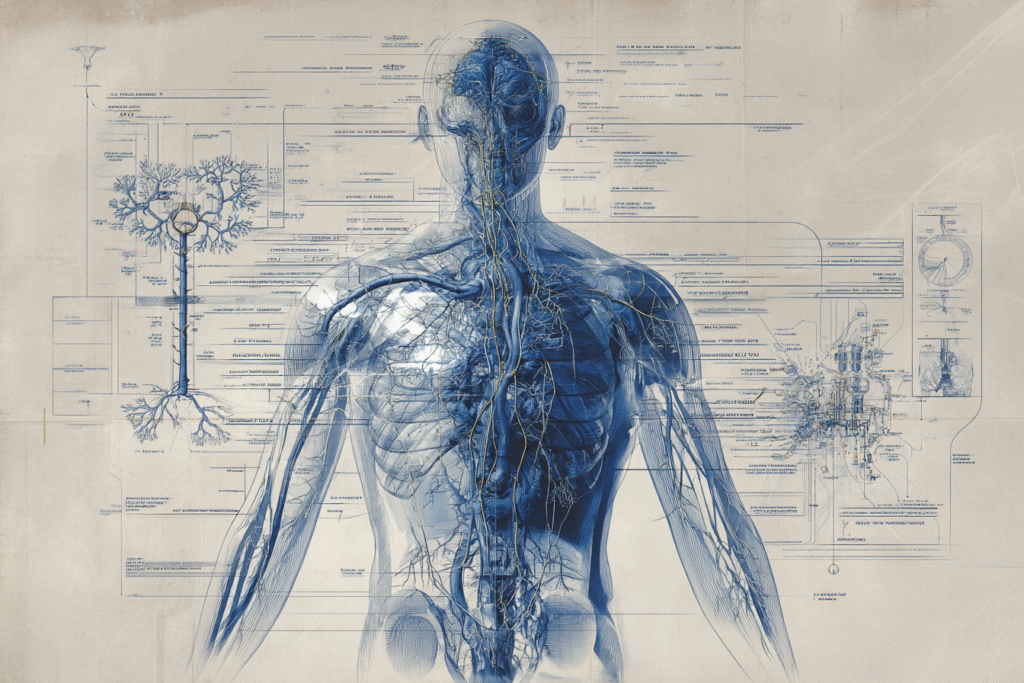
And perhaps more than biology, it’s a moment of reckoning. Not just with the state of our health, but with how we’ve related to it all along. Have we been stewards of our vitality? Or passengers in a system we barely understand?
Because here’s the quiet truth no one tells us:
“Health is not something that happens to us. It’s something we co-create.”
But the way our systems are built (medical, educational, societal) don’t make this easy. We’re told to defer to experts, but never taught how to listen to our own internal signals. We’re flooded with advice, but rarely empowered to discern what’s true for us.
And so we outsource. We wait. We hope someone else knows what’s going on in our body better than we do, even though we’re the only one who lives in it 24/7.
This isn’t about rejecting medicine or distrusting doctors. It’s about reclaiming partnership. About shifting from passivity to participation. From reaction to awareness.
It’s about understanding that clarity in life begins with clarity in the body. Because when the body is foggy, stressed, inflamed, or exhausted, every other decision is filtered through that distortion.
What if health wasn’t just something to fix when it breaks? What if it was the foundational system of clarity, the original interface between soul and world?
That’s what this article, and this next evolution in human wellness, is about.
Yet despite health’s foundational importance, most of us navigate it blindly. We’re taught to optimize our careers, our finances, our productivity—but rarely are we taught to truly understand the one system that makes all others possible: our own bodies.
The Current Reality: A System Built on Silence, Gaps, and Guesswork
“Today, most health decisions are made with partial truths and hopeful guesses.”
Despite all the technological advancements in the medical world, the day-to-day experience of health for most people remains alarmingly analog, fragmented, and reactive.

Walk into any doctor’s office today, and you’ll encounter a system built on memory, guesswork, and fragmented records. Despite technological advances, healthcare remains surprisingly analog: your symptoms are what you remember, your timeline is what you think happened, your family history is stories passed down through generations.
That’s not just outdated. It’s dangerous.
Incomplete Records, Incomplete Stories
There is no unified health identity for most individuals. If you’ve ever moved cities or changed doctors, you’ve likely experienced the chaos: missing records, repeated tests, and disjointed care. Even within the same country, healthcare providers are often unable to access records from another system or clinic.
Studies consistently show that most U.S. hospitals struggle to access patient data from outside their own network, with even fewer able to integrate or interpret it meaningfully.
This becomes even more critical when considering the rise of medical tourism — where people travel across borders for affordable or specialized care. In these cases, medical histories become nearly impossible to retrieve, and patients often carry nothing more than a printout or a memory of what their last doctor said.
Doctors, through no fault of their own, are often working with partial inputs. Guesswork. Fragments.
Memory and Emotion: A Faulty Interface
Now layer in the cognitive fog and emotional overwhelm that typically accompany health concerns. Most patients don’t remember dates, drug names, or exact symptoms and even if they do, they may be influenced by stress, fear, or shame. These aren’t neutral data points, they’re emotionally charged recollections.

So the decision-making process becomes clouded:
Doctors are trying to build a puzzle from scattered, imprecise, and emotionally filtered pieces. And many patients, unconsciously, surrender the responsibility entirely, assuming the system knows best.
“The system isn’t designed to remember. It’s designed to react.”
It rarely looks 10 years back. It rarely connects diet to mood to injury to hormone shifts to trauma. It rarely correlates your mother’s autoimmune issues with your own mystery fatigue.
And that’s not because the data doesn’t exist — it’s because you were never taught to track it. And the system doesn’t reward those who do.
Family History: The Oral Tradition of Medicine
Ask someone about their family’s health history and you’ll often get stories, not records.
You might hear:
“My dad died young, something with his heart.”
“Grandma had a lot of pills. Not sure what for.”
“I think cancer runs in our family, but I don’t know what kind.”
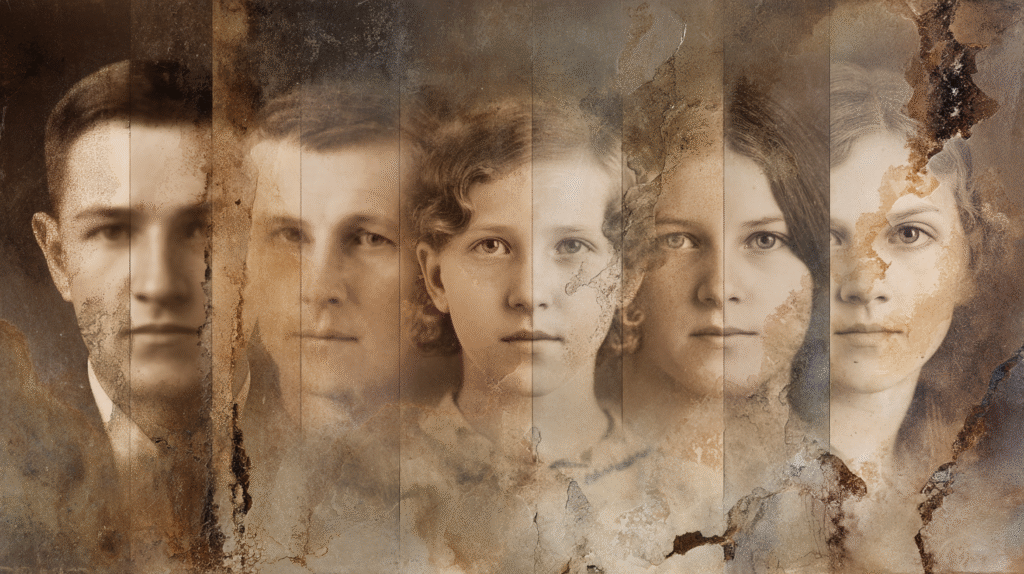
There is no formal repository for multi-generational medical history that combines digital records, anecdotal memory, and genetic risk, unless you build one yourself.
Which brings us back to the central truth:
You are the only one living your full story. But you’re rarely given the tools to track it.
Why This Needs to Change
When we outsource our awareness, we sacrifice our sovereignty.
For most people, the turning point comes not during a routine visit, but in a moment of crisis: the sudden collapse. The phone call with test results. The chronic pain that has quietly intensified for months until one day it’s no longer quiet.
In that moment, you realize what’s been lost. Not just time or health, but clarity.
You wonder how long it’s been going on. You ask yourself if there were signs. And usually, there were, but you didn’t track them, and no one helped you piece them together.

The first quiet cost:
You become reactive in your own body.
The Hidden Cost of Health Avoidance
Because the system is hard to navigate, expensive, and often dismissive of nuance, people learn to avoid it. We downplay symptoms. We Google instead of asking. We wait for it to get worse.
Research indicates that approximately one in three adults in the U.S. delay or avoid medical care due to cost concerns.
This isn’t just about financial cost, it’s also emotional. Many people carry shame or guilt around their bodies. Around weight. Around culture. Around fatigue. Around symptoms they think they should “tough out.” So they keep it quiet.
And so the pattern continues:
By the time someone gets help, the problem is larger, more complex, and much harder to reverse.
We don’t prevent — we patch.
We don’t track — we react.
We don’t ask questions — we wait to be told.
This passive dynamic leaves people feeling disempowered, dependent, alone, and often afraid.
Myth vs. Reality: “Doctors Know Best”
Myth: The doctor always knows what’s best for your body.
Reality: The doctor knows what’s likely, but only if they have full context.
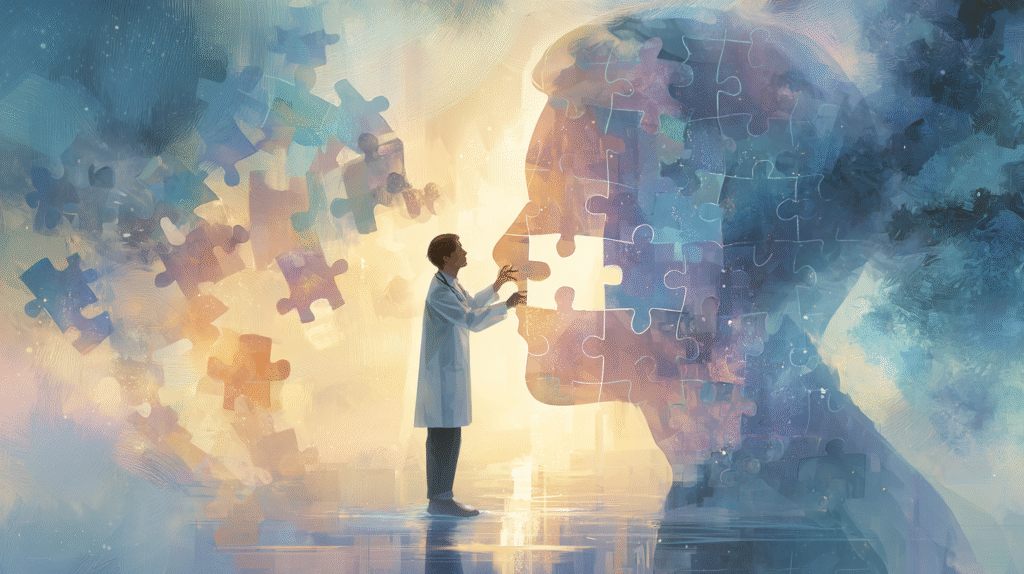
Most providers are trained in probability-based care. Whether they realize it or not, without:
- Your full history
- Your daily habits
- Your symptom patterns
- Your lifestyle context
Their conclusions and treatment can only go so far. From this realization, AI doesn’t replace the doctor: it completes and enhances the picture the doctor is trying to see.
Empowered patients don’t challenge expertise. They enrich it.
The Crisis of Health Illiteracy in the Age of Over-Information
Paradoxically, we have more health information than ever, yet people remain confused. We’re overwhelmed by conflicting advice, miracle cures, and the tug-of-war between fear and false hope.
And in that fog, many people give up.
They stop trusting their instincts, and stop asking deeper questions.
This isn’t about blaming people. It’s about acknowledging the design:
The system was never built to empower individuals. It was built to treat populations. And in doing so, it overlooks the reality that each body carries its own story, rhythms, sensitivities, and needs.
So what happens when we reimagine the system?
When we say:
“Maybe the problem isn’t that we’re broken, maybe it’s that the tools to understand ourselves have been missing all along.”
AI isn’t your healer. But it can become the missing infrastructure, the scaffolding, that helps you finally listen to the system you’ve been living in all along.
What Becomes Possible With AI and Why It Matters
“When you can walk into a clinic with a lifelong health timeline, you’re not just a patient, you’re a partner.”
AI won’t replace your doctor. And it shouldn’t.
But what it can do, right now, is augment your capacity to understand, track, and engage with your own health in a way that was nearly impossible just a decade ago.
Your doctor sees a sliver of your life.
Your body lives the whole thing.
And AI, if designed and used ethically, can begin to bridge that gap, acting as your memory, your filter, your pattern-finder, and eventually, your co-pilot in long-term well-being.
Let’s break down exactly what this looks like.
AI Can Track, Store, and Remember What You Forget
We forget symptoms. We downplay pain. We misremember timelines.
AI doesn’t.
With the rise of wearables, digital health diaries, and passive monitoring devices, your body can now generate a constant stream of data: heart rate, heart rate variability (HRV), sleep quality, glucose trends, stress markers, temperature variability, and more.
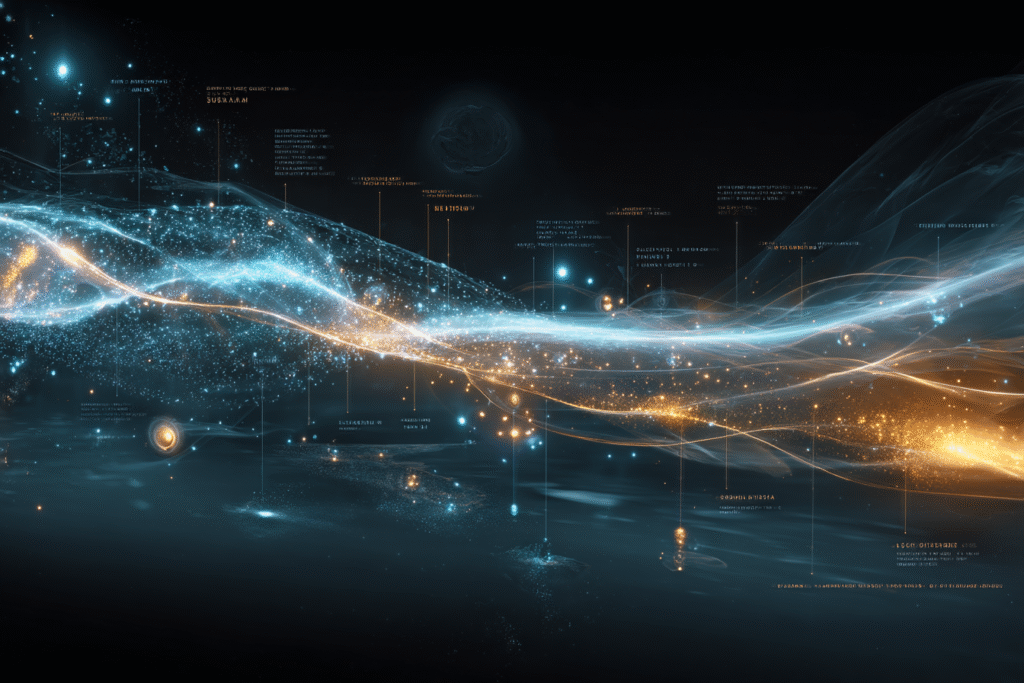
Devices like the Oura Ring, WHOOP band, and Apple Watch already track many of these metrics, and companies like Levels Health and ZOE are layering AI on top to analyze food reactions, inflammation patterns, and microbiome responses in real-time.
Where most people see isolated dots, AI sees trajectories. Patterns. Relationships between countless variables.
This means your health record becomes a living timeline, not a stack of paperwork you carry from one clinic to another.
AI Can Correlate Symptoms Across Time, Lifestyle, Genetics, and Environment
Imagine being able to correlate a symptom — say, recurring headaches — with:
- Your menstrual or hormonal cycle
- Sleep deprivation 3 days earlier
- Dehydration and weather changes
- Recent stressors from work
- A new supplement or diet change
- Your mother’s history of migraines
This isn’t far-fetched. It’s already happening.
Startups like Ginger and Thorne are building AI-backed platforms that look beyond just “What’s wrong right now?” to ask: What might be causing this — and what’s the full picture?
AI can do what even the most attentive doctor can’t: Hold years of multi-dimensional context in mind, and never get tired.
AI Doesn’t Get Overwhelmed or Defensive, It Just Shows You the Signals
Doctors are human. Patients are human. And health conversations are emotional. Sometimes we forget to ask the right question. Sometimes we’re embarrassed. Sometimes doctors are rushed or dismissive.
AI provides a different kind of interaction. It can surface correlations, remind you of trends, and prepare you for a more empowered conversation.
Think of it this way:
AI can help you enter the room with clarity, not confusion.
With questions, not guesses.
With confidence, not fear.
You Gain Ownership Over Your Own Narrative, Your Own Body
This is where the paradigm truly shifts.
You’re no longer waiting to be diagnosed.
You’re tracking patterns before they become problems.
You’re documenting symptoms, not just tolerating them.
You’re learning what affects your body, not relying on generic advice.
You’re coming to each appointment with your own insights, not just their checklist.
This is the difference between being a subject in the healthcare system… and being a sovereign participant in your own health.
And this matters because it changes how you heal, how you age, how you make decisions, and how you relate to your future self.
“When data becomes personal, healing becomes possible.”
From Fragmented to Flow: Traditional vs. AI-Augmented Health
The shift isn’t just in tools, it’s in how we relate to our bodies.
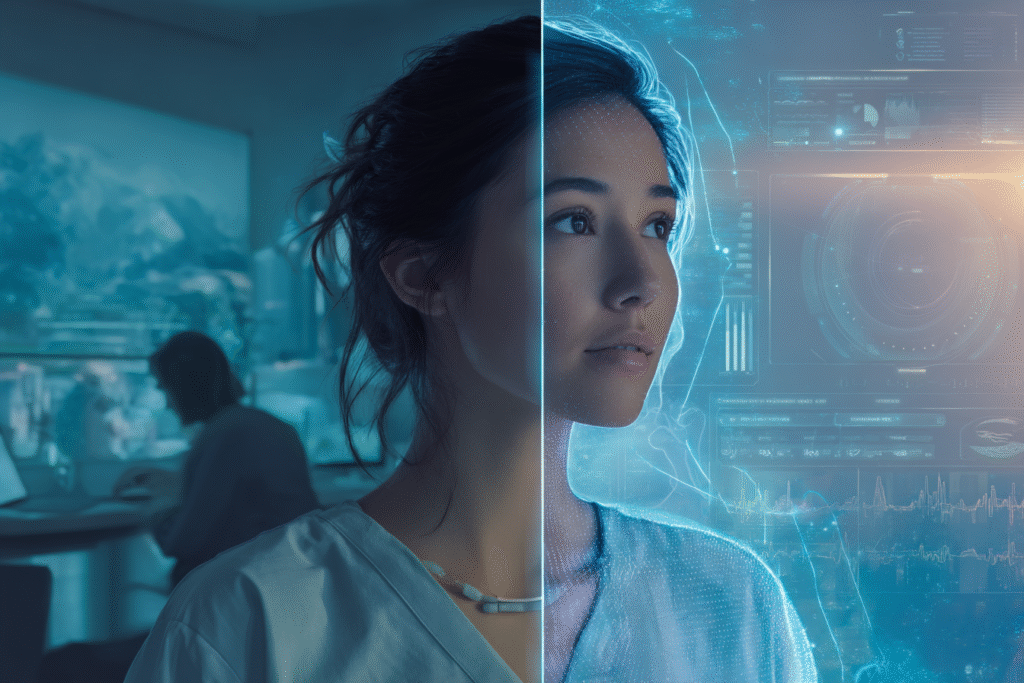
Traditional Healthcare
- Scattered records across multiple systems
- Doctor-led decisions with limited appointment time
- Memory-based symptom reporting
- Reactive, episodic care
AI-Augmented Healthcare
- Unified, continuously updated health timeline
- Collaborative decisions with full context
- Pattern detection across multiple variables
- Proactive, continuous monitoring
The shift is multi-dimensional, not just digital.
AI helps turn your health from a snapshot into a living, evolving story. But what does this actually look like in practice?
What This Could Look Like (Today & Tomorrow)
The transformation from passive patient to active health partner isn’t theoretical—it’s happening now through accessible tools and emerging possibilities.
“The future of health isn’t a sci-fi fantasy, it’s a shift in who holds the awareness.”
We often assume that radical change comes with radical disruption. But most meaningful health transformations start small: noticing something earlier, asking a better question, tracking a subtle pattern, listening to what your body has been saying all along.
AI isn’t replacing your health journey. It’s simply illuminating more of the path.
Here’s what that looks like, both today and in the very near future.
TODAY: Empowered Health Through Simple AI Tools
You don’t need a futuristic lab or expensive tech stack to begin co-creating your health journey. In fact, many people are already doing it, often without realizing it.
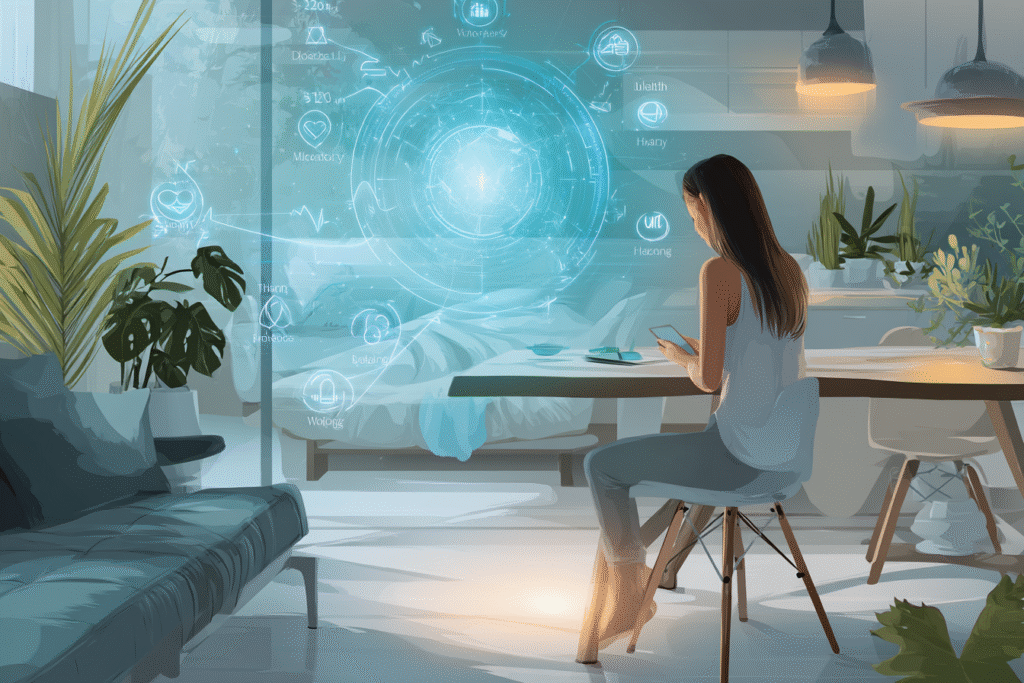
Let’s explore five examples:
1. Using Wearables and Apps to Track Biometrics and Patterns
Tools like WHOOP, Oura, and the Apple Watch provide round-the-clock insights into your sleep cycles, heart rate variability, respiratory rate, and recovery scores. These are no longer just “fitness” tools, they’re windows into nervous system regulation, immune function, and chronic stress.
Research has demonstrated that wearable devices can detect early signs of illness through changes in heart rate variability and sleep patterns, sometimes before symptoms appear.
2. Journaling Symptoms and Energy Cycles with AI Support
Apps like Bearable and CareClinic allow you to track symptoms, mood, energy, bowel movements, medications, and habits, and use AI to surface correlations between them. Over time, you begin to understand not just “how you feel,” but why you feel that way.
Imagine seeing that your monthly anxiety spikes 3 days before your period, or that your joint pain worsens after nights of poor sleep and alcohol.
3. Using AI to Explain Labs and Create Custom Health Briefings
Instead of waiting for your doctor to explain lab values during a rushed appointment, platforms like HealthGPT, Zenda, and emerging tools from Hume AI allow you to upload results and receive plain-language interpretations, comparative trends, and even AI-suggested questions to ask your doctor.
This transforms the patient from a passive recipient to a knowledgeable partner in the consultation room.
4. Compiling Family Medical History into Searchable Timelines
While most people have only fragmented knowledge of their family health history, AI tools can help you organize anecdotes, symptoms, and known diagnoses into structured data sets. This allows you to cross-reference your own markers with generational patterns, a precursor to future genetic AI integration.
5. Generating Questions Before Doctor Visits
Instead of relying on memory or emotion in the moment, you can use AI (like ChatGPT or Perplexity with health-specific prompts) to generate personalized questions based on your symptoms, data, or concerns — leading to more productive appointments and better outcomes.
3 AI Health Tools You Can Start Using Today
- Bearable
Track mood, energy, pain, digestion, and more. AI surfaces trends you might miss. - ChatGPT (with Health Prompting)
Use custom prompts to analyze symptoms, ask better questions, or prep for appointments. Prompt Example:
“Here are my symptoms and health history. What patterns do you notice?” - Apple Health or Google Fit(with integrations)
Sync wearable data from multiple sources. Great for building a centralized, daily view of your health trends.
Use these tools not to obsess over data, but to notice what deserves your attention.
TOMORROW: AI as a Lifelong Health Companion
In the near future, co-creating your health journey with AI could become not just helpful, but essential.

Here’s what that might look like:
1. Unified, Lifelong Health Dashboards
Imagine a single portal that holds all your wearables, lab work, medical imaging, doctor notes, prescriptions, voice entries, and lifestyle data. Searchable, sortable, and always with you from the moment you were conceived. Not owned by a hospital. Owned by you.
Projects like Apple Health Records, CommonHealth, and OpenMRS are already pushing toward this level of integration, though global adoption remains slow.
2. Proactive Diagnostics and Personalized Longevity Guidance
Using years of your personal data and billions of anonymized case studies, AI will be able to forecast likely health issues before they emerge, and offer interventions tailored to your biology, environment, and lifestyle.
Think Clippy for health, but smarter:
“It looks like your cortisol levels and sleep disruptions may be contributing to inflammation. Would you like to see a personalized 7-day reset protocol?”
3. 24/7 Conversational Wellness Assistants
Voice-activated, emotion-aware AI coaches that can check your data, mood, and goals, and guide you toward clarity, not just compliance. Tools like Replika, Hume AI, and Woebot are early steps in this direction.
4. Fully Personalized Protocols for Nutrition, Movement, and Recovery
AI-generated training plans that evolve with your cycle, stress load, injuries, and goals. Meal plans that adapt to your gut data and glucose response. Sleep programs tuned to your chronotype and neurotransmitter profile.
This is the new frontier of hyper-individualized care, where “best practice” becomes your practice.
5. Anonymized Global Health Data That Unlocks Medical Breakthroughs
With proper data governance and consent, anonymized AI-accessible health records could become the key to identifying the next wave of autoimmune triggers, viral mechanisms, or even cures for rare diseases.
You’d be part of the solution, not just the statistic.
These tools already exist in prototype or partial form. What’s missing isn’t capability, it’s integration, awareness, and trust.
But that can change, and it starts with each person understanding that AI isn’t here to replace your intuition… It’s here to help you remember what your intuition has been trying to tell you all along.
Why This Isn’t Just Tech Hype — It’s Soul Work
This isn’t about optimizing productivity. It’s about remembering how to live in your body.
If we’re not careful, even the most powerful tools can become more noise.
More dashboards. More data. More optimization. Another layer of inputs layered on top of an already overwhelmed nervous system.
This isn’t about becoming a more efficient machine.
It’s about becoming a more conscious human being.
Because at its best, the purpose of AI in your health journey isn’t to add more noise, it’s to help you hear your signals.
To notice your cycles.
To understand your moods.
To track your stress before it spills over.
To spot the slow drip of inflammation.
To see how your past is still echoing through your body.
This goes beyond metrics—it’s about understanding your body as an interconnected system worthy of attention and respect.
Technology as a Mirror, Not a Master
Most people use technology to escape their bodies:
Distractions. Notifications. Hyperstimulation. Endless screens.
What if technology could help you return to your body instead?
AI can’t meditate for you.
It can’t heal childhood trauma.
It can’t make you drink water, or grieve a loss, or rest when your soul is tired.
But what it can do is show you the patterns, and remind you that your choices matter — your body is talking to you, even when the world is too loud to hear it.

To live in a body you understand.
To age with intention, not fear.
To steward your energy like it’s sacred, because it is.
And this is what it means to pursue clarity:
Not just in mind, not just in your calendar, but in your physiology. Your mood. Your breath. Your choices.
When your system is clear, you become more coherent.
More decisive. More present.
More yourself.
That’s the power of aligning technology with soul.
Not to replace your inner voice, but to amplify your ability to listen to it.
A Gentle Invitation
As you finish reading this, take a moment and ask yourself: What’s one thing your body’s been trying to tell you lately?
Don’t wait for permission to start listening. Begin today:
- Week 1: Choose one metric to track consistently – energy levels, sleep quality, or mood patterns
- Week 2: Request copies of your last three years of lab work from your doctor
- Week 3: Download one tracking app (Bearable, Apple Health, or ChatGPT for health prompting) and begin daily logging
Your body has been speaking. These tools simply help you listen.
Start small. Start today. Because health doesn’t need a revolution overnight – it just needs your presence.
And from that presence, clarity returns.
You Are the Constant
The doctors may rotate. The systems may evolve. Technologies will rise and fall. Therapies will shift. Protocols will change. But the one thread that weaves through every chapter of your health, from your first breath to your last, is you.

You’ve always been there, through every symptom, every recovery, every subtle signal you couldn’t quite decode at the time. The question isn’t whether your body is speaking.
The question is: Are you willing to listen?
For too long, we’ve been taught that listening to our own bodies is naïve. That real knowledge lives somewhere else. That truth only exists when someone in a white coat confirms it.
But that model is fading and a new one is emerging, one where expertise is honored, and inner wisdom is respected.
One where doctors are collaborators, not gatekeepers.
One where AI holds memory, and you hold meaning.
One where data becomes your mirror, not your master.
Because health isn’t something that happens to you.
It’s something you’re already shaping with every meal, every decision, every breath.
The question is: Will you shape it consciously?
Don’t wait for permission to start listening.
Don’t wait for crisis to begin the conversation.
Don’t wait for a diagnosis to be the first data point you pay attention to.
Clarity begins when you realize this truth:
You were never meant to outsource your vitality.
You were meant to co-create it.
Because healing doesn’t begin with information, it begins with attention. With ownership. With the choice to be present in your own process.
“You are not a passive participant in your health. You are the pattern, the witness, the continuum.”
And now, with the right tools, you don’t have to do it alone.
If this resonated, send it to someone whose body has been whispering to them too.
See you in the next insight.


